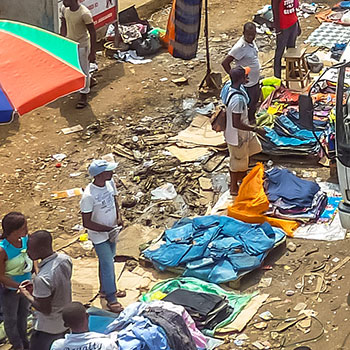We use cookies on this site to enhance your experience.
By selecting “Accept” and continuing to use this website, you consent to the use of cookies.

Nov. 18, 2015
By: Brayden Anstee
On Oct. 17, the United Nations once again observed the International Day for the Eradication of Poverty. Although the day received scant attention particularly in industrialized countries, its observance was actually first commemorated in France in 1987 (United Nations, 2015). Over one hundred thousand people gathered at the Trocadéro, the same location where the Universal Declaration of Human Rights was signed, to affirm that poverty was an unacceptable and preventable violation of basic human rights (United Nations, 2015). Surely, this was a time of great optimism and hope for the creation of a better future for everyone worldwide.
At around the same time, the global neoliberal economic order had begun to emerge. This now ever-present policy framework was touted by fiscally conservative world leaders such as Margaret Thatcher and Ronald Reagan as the only way forward for international politics and relations (Roy, 2000). With the new global order came the promise of elimination of poverty through a process termed “trickle-down economics” (Greenwood and Holt, 2010). The proponents of neoliberalism admitted that inequality was a necessary part of capitalism, but rationalized that gross inequalities would be resolved through market forces and money would ‘trickle-down’ from the wealthy to the poor, leaving everyone better off and few, if any, impoverished (Greenwood and Holt, 2010; Scholte, 2005). By the late 1980s the policies were in full swing, the International Day was established, and belief in a fair and just future for all didn’t seem so unreasonable.
So what went wrong?
According to Scholte (2005), despite the unfettered optimism espoused by neoliberal proponents, world poverty has not been even remotely close to eradicated. In fact, that author notes that certain regions of the world have faced more severe destitution than ever before under the neoliberal order, including nations in Asia, Latin America, and Africa. According to the 2014 Human Development Report by the UNDP, nearly 1.5 billion people living in 91 developing countries still live in extreme, multidimensional poverty. And while neoliberal supporters could point to data that suggests world poverty has decreased overall (such as the 2013 UN Millennium Development Goals Report), this does not mean that gross inequalities have become less significant.
Greenwood and Holt (2010), have suggested that the neoliberal promise of wealth trickle down has not come true and has instead resulted in the wealthy retaining and increasing their wealth and the impoverished remaining impoverished. Similarly, Nkansah-Amankra, Agbanu and Miller (2013) found that poverty, poor health and incarceration were especially prevalent among disadvantaged racial and ethnic minorities in the United States, symptomatic of an economic order that is culturally hegemonic. By their account, the neoliberal order creates and exacerbates structural inequalities that serve to greatly privilege one small group of people, namely the prominently influential ‘one percent’, a practically homogenous group consisting primarily of white, heterosexual, middle-aged males. This small group of wealthy individuals has now accumulated 50% of the total global wealth according to a recent report (Tonkin, 2015), and logically speaking if one group continues to increase their share of the total wealth, other groups must be losing their own shares of it. Neoliberal economics have largely fuelled this increasing disparity in wealth and have made it ideologically acceptable to many. However, if the wealth is not trickling down as Greenwood and Holt have argued it isn’t, inequality and relative (if not absolute) poverty may increase globally as the ‘rich get richer and the poor get poorer’.
Oct. 17, 2015 marked the 28th anniversary of the International Day for the Eradication of Poverty. It has been nearly three decades of the vaunted neoliberal economic order, and poverty has not yet been eradicated. While some believe that neoliberalism can be reshaped to achieve this lofty goal (e.g. Stiglitz, 2002), others believe that a different, more fair and equal economic order is needed.
Perhaps by Oct. 17, 2016, we will have some clearer answers. There are billions of people across our global community in dire need of them.